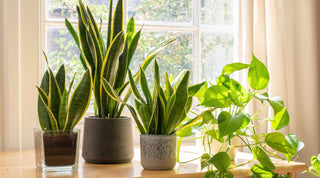Tomatoes are a staple in home gardens, but understanding indeterminate vs. determinate tomato varieties is crucial for a successful harvest.
This comprehensive guide will delve into these two categories, explaining their growth habits, yield potential, and best practices for planting and care.
Indeterminate Tomatoes: Continuous Growers
Indeterminate tomato plants are known for their continuous growth throughout the growing season. They keep producing new leaves and flowers until the first frost. This growth habit makes them ideal for gardeners who want a steady supply of tomatoes over a longer period.
Growth and Yield
Indeterminate varieties can grow quite tall, often reaching heights of 6 feet or more. They require sturdy support, such as cages or trellises. These plants typically start producing fruit 60-80 days after planting and continue until frost, offering a consistent yield.
Planting and Care
To plant indeterminate tomatoes:
- Choose a sunny location with well-draining soil.
- Space plants about 24-36 inches apart to allow for air circulation and growth.
- Use tall cages or trellises for support.
For care:
- Water consistently, aiming for about 1-2 inches per week.
- Fertilize with a balanced fertilizer every 4-6 weeks.
- Regularly check for pests and diseases.
Determinate Tomatoes: Compact and Controlled
Determinate tomatoes, on the other hand, grow to a fixed size. They are often referred to as "bush" tomatoes because of their more compact nature. These plants tend to set fruit over a shorter period, making them an excellent choice for those who prefer to harvest all at once.
Growth and Yield
Determinate tomatoes typically grow to about 3-4 feet in height and don't require as much staking or caging as indeterminate varieties. They start producing fruit 45-60 days after planting and finish their yield within a few weeks, which is perfect for canning or processing.
Planting and Care
To plant determinate tomatoes:
- Select a site with full sun and rich, well-drained soil.
- Space plants about 18-24 inches apart.
- Use short stakes or cages to support the plant and keep fruit off the ground.
For care:
- Water regularly, ensuring consistent soil moisture.
- Apply a balanced fertilizer at planting and again when fruits begin to form.
- Monitor for pests and diseases, particularly at the base of the plant.
Common Tips for Both Types
Regardless of the type, all tomato plants benefit from certain universal care tips:
- Mulch around the base to retain moisture and control weeds.
- Ensure proper air circulation to prevent fungal diseases.
- Remove any suckers (small shoots) from indeterminate plants to direct energy towards fruit production.
- Regularly inspect for pests like aphids and tomato hornworms.
Harvesting Tips
For both indeterminate and determinate tomatoes:
- Harvest when the fruit is uniformly colored and slightly soft to the touch.
- Regular harvesting encourages more fruit production in indeterminate varieties.
Conclusion
Whether you choose indeterminate vs. determinate tomatoes depends on your space, support availability, and harvest preferences. By understanding these differences and implementing proper planting and care techniques, you can enjoy a bountiful and delicious tomato harvest from your garden. Remember, the key to successful tomato growing lies in regular care, adequate support, and a passion for gardening. Happy tomato growing!



